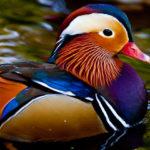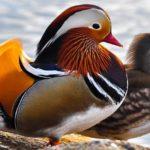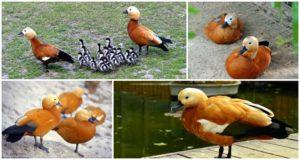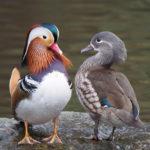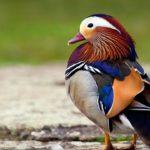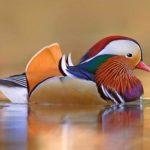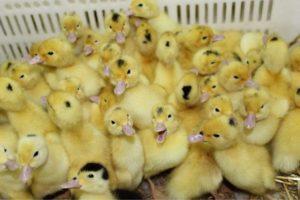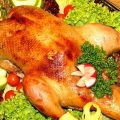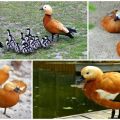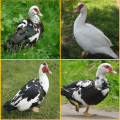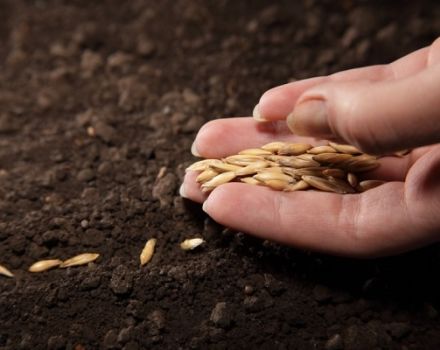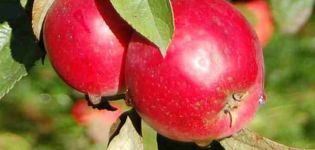What do mandarin ducks look like and where do they live, what they eat and how many years they live
Mandarin ducks are considered one of the most attractive and vibrant representatives of the fauna. These birds have a very interesting and rich color of feathers, which attracts a lot of attention. In China, this duck is considered a symbol of the family. She can often be found in paintings in wedding salons. Also, this bird is often presented on the wedding day.
What does a mandarin duck look like
The mandarin duck has colorful plumage. Moreover, this is more typical for males. Their head and neck are decorated with sideburns and long feathers. One of the feathers on the wing resembles a fan in shape. When the bird swims, the orange webs protrude upward and resemble saddles.
The lower torso is predominantly white. The goiter is purple and the top of the tail is dark in color. On the back, neck and head, rich colors dominate. The plumage has green, red, orange colors. There is also a blue tint.
Females have more modest plumage when compared to males. Their color helps to camouflage against the background of natural colors. The back is brownish, the head is gray, and the underside is white. Color transitions are smooth. The head is also decorated with a small crest. The beak has a dark olive tint. In this case, the paws are light orange, gray or dirty yellow.
Ducks are lightweight, which is 400-700 grams. The difference in weight between the two sexes is almost invisible. Light weight makes it possible for birds to fly quickly. From water or the surface of the earth, they are able to take off almost vertically.
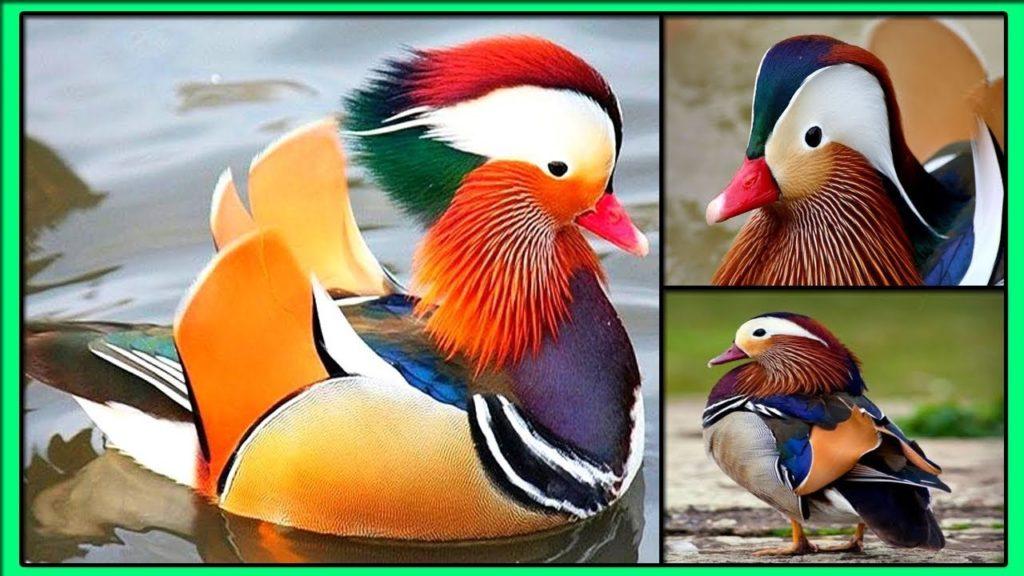
Another clear difference is the sounds that males make in the spring during breeding. They do not quack, but whistle or squeak. A rare representative of this species is the white mandarin duck. It has a completely white plumage. In this case, the males have a cream shade in color. The relationship with a typical mandarin duck can be established by a specific saddle on the back, which is formed by 2 large wing feathers.
Where does it live and what does it eat?
More than 50% of all individuals live in Russia. Bright birds are found on Sakhalin. Also mandarin duck live in the Amur region and in Khabarovsk. With the arrival of autumn, birds fly away from Russia, because winters are too cold for them. Ducks overwinter in warm countries, where the temperature is at least +5 degrees.Ducks are able to fly over very impressive distances. They often fly to China or Japan for the winter. When the snow melts, the birds return home.
Today, the area of distribution of birds has become larger - now mandarin duck live in the USA, Ireland, Great Britain.
These ducks primarily eat aquatic plants. They also consume worms, snails, molluscs, and small frogs. A distinctive feature of birds is their addiction to acorns, which they pluck right from the trees. Thanks to this, the duck replenishes its body with vitamins and minerals.
In addition, birds can eat plant seeds and grains. To find goodies, they often fly to the fields where winter crops grow. Mandarin duck often eat rice and buckwheat. At home, beautiful ducks can be fed with barley, corn, oatmeal. Also, birds are happy to eat bran. In addition, they have a need for animal protein. It is worth using minced fish or meat as its sources.
Character and lifestyle
The mandarin duck is considered a very mobile creature. She flies and swims beautifully. Sharp claws allow birds to sit on tree branches. Birds of this breed prefer to live in quiet places where there are no people. These areas are usually covered with branches or trees. They create nests in hollows, which are at high altitudes. Ducks use their own down as a heat source. This behavior is characteristic of ducks of this species.
Social structure and reproduction
These birds are monogamous. They choose a single partner and are able to remain faithful to him all their lives. On the water and in the sky, the birds keep in pairs. They show amazing care for each other. Males help females during the incubation period by obtaining food for them.

When choosing a female, the drake makes circles on the water and puffs up the crest. Most often, several males fight simultaneously for the attention of a duck. Then she chooses the best one. The mandarin duck makes its nests in hollows. After that, 7-14 small eggs hatch for almost a month. Newborn ducklings are highly active. Almost from birth, they learn to dive and swim. In the process, they get their own food - small insects and plant seeds. After 6 weeks, the ducklings can already fly.
What are the natural enemies of birds
The enemies of the mandarin are squirrels that are able to climb into tree nests. Otters and raccoon dogs are also a danger to ducks. They often eat eggs and attack chicks. They also pose a threat to adults.
Ducks are small in size, therefore encounters with predatory animals that surpass them are dangerous for them.
Hunters play a special role in the destruction of mandarins. Poachers are attracted by the color of the males. Their carcasses are often stuffed. However, there are often situations when hunters confuse a drake with other species of birds. This is often seen during molting.
Population and status of mandarins
Previously, ducks were found in the eastern regions of Asia. However, as a result of destructive activities of people and deforestation, the habitat of ducks has significantly decreased. They disappeared from areas where they previously met. Back in 1988, the mandarin duck was included in the Red Book. This bird species has been listed as an endangered species. In 1994, the status was changed to "low risk". Since 2004, the extinction of birds has a minimal threat.
Despite the trends towards a decrease in the number and a decrease in the natural habitat, the number of ducks is not approaching critical parameters. Their population is not decreasing too quickly. For 10 years, the rate of decline is less than 30%. Therefore, scientists do not express fears for this species.
Species protection
You cannot hunt these ducks in Russia. The birds remain under state protection. More than 30 thousand ducks have been recorded in the Far East and Primorye. There are a number of protected areas in which birds can freely live on the banks of water bodies.
A large number of ducks live in Japan, China, Korea. Wintering birds are also found in these regions. In addition, today the mandarin is often artificially bred. Thanks to this, the birds appeared in Spain, Austria, England, Germany and other countries of the world.
The mandarin duck has bright plumage and attracts attention from afar. These birds are considered a real decoration of natural areas. To protect birds from extinction, they were included in the international Red Book.
